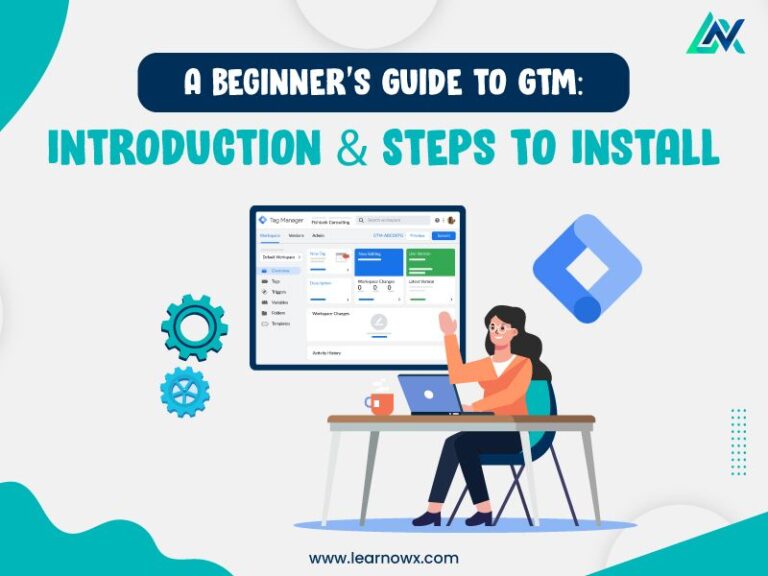Sharing is caring!
Did you know that 68% of businesses struggle to understand their website visitors’ behavior & effectively track form submissions on their websites?
Truthfully, it’s a staggering statistic, considering how crucial form submissions and tracking are for generating leads, gathering user feedback, and driving conversions.
Thankfully, form tracking emerges as a game-changer tool within Google Tag Manager (GTM). It makes managing these tracking mechanisms efficient by empowering marketers and website owners with invaluable insights into user behavior.
Fortunately, with the power of Form Tracking in Google Tag Manager (GTM), you can gain invaluable insights into your form performance and optimize your website accordingly.
In this comprehensive guide, we’ll explore the world of form tracking using Google Tag Manager, shedding light on its importance, benefits, and how to set up to optimize your website’s performance.
How Google Tag Manager Revolutionizes Form Tracking
Google Tag Manager (GTM) is a powerful tool that simplifies implementing and managing tracking codes on your website. With GTM, you can track form submissions, button clicks, page views, and other user interactions without complex coding or frequent website updates.
Here’s how GTM revolutionizes form tracking:
a. Centralized Tag Management: GTM is a centralized hub for managing all your tracking tags, allowing you to deploy and update tracking codes quickly and efficiently.
b. Event-Based Tracking: With GTM, you can set up triggers to track specific events, such as form submissions, based on user interactions, ensuring that your tracking is precise and relevant.
c. Custom Variables and Macros: GTM enables you to capture custom variables and macros, such as form field values or user IDs, providing deeper insights into user behavior and segmentation capabilities.
Importance Of Form Tracking
Forms serve as gateways for user engagement and conversion on websites. Whether it’s a contact form, a signup form, or a checkout form, every interaction with a form represents a potential conversion opportunity.
Form tracking enables businesses to gain valuable insights into user behavior throughout the form submission process. From the moment a user starts filling out a form to the final submission, every step can be monitored and analyzed to understand user intent, preferences, and pain points.
Insight into User Engagement: Tracking form submissions provides invaluable data on user engagement, revealing which fields are most frequently filled, abandoned, or causing friction.
Conversion Optimization: By analyzing form submission data, businesses can optimize their conversion funnels, identifying bottlenecks and streamlining the user journey for improved conversions.
Enhanced Marketing Strategies: Understanding how users interact with forms allows marketers to tailor their campaigns effectively, from personalized messaging to targeted retargeting efforts.
Best Practices For Form Tracking
To make the most out of form tracking in Google Tag Manager, consider implementing the following best practices:
1. Focus on Key Forms: Identify critical forms like contact or checkout, prioritizing tracking efforts.
2. Utilize Event Tracking: Implement event tracking for comprehensive user interaction insights.
3. Set Clear Goals: Establish goals in analytics platforms to measure form conversion rates.
4. Customize Triggers: Create tailored triggers in GTM for precise event-based tracking.
5. Customize Tracking Parameters: Capture specific form data for detailed analysis and segmentation.
6. Regular Performance Monitoring: Monitor form performance consistently for optimization opportunities.
Steps To Set Up Form Tracking in Google Tag Manager
Set Up Your Google Tag Manager Account: If you haven’t already, create a Google Tag Manager account and install the GTM container code on your website. Follow the steps outlined by Google to set up your account & container.
Create a New Tag: In GTM, navigate to the “Tags” section and click “New Tag.” Select the appropriate tag type for form tracking, such as Google Analytics or any other analytics platform you use.
Configure Tag Settings: Configure the tag settings to track form submissions by specifying the relevant trigger type, such as “Form Submission,” and defining the conditions under which the tag should fire.
Set Up Triggers: Create triggers that fire when specific form submission events occur, such as when a user submits a contact form or completes a purchase. You can use built-in triggers or create custom triggers based on your requirements.
Test Your Implementation: Before publishing your changes, use GTM’s preview mode to test your implementation and ensure that the tags and triggers work as expected. Submit test forms on your website to verify that data is being captured accurately.
Publish your changes: Once you’ve validated your implementation and confirmed that form tracking works correctly, publish your GTM container to make the changes live on your website.
Final Words
To conclude, integrating form tracking via Google Tag Manager emerges as a transformative tactic for marketers striving to harness the power of their digital marketing efforts. By harnessing invaluable insights into user behavior and website performance through form tracking, businesses can optimize user interactions, elevate conversion rates, stimulate growth, and ultimately amplify conversions.
As the digital sphere evolves, leveraging tools such as Google Tag Manager for form tracking will increasingly become indispensable for businesses aiming to thrive and stay ahead of the competition in the online arena.
Are you ready to unlock your brand’s full potential? Hire LearNowX cutting-edge digital marketing services today & kickstart your journey towards digital success.
With expertise in SEO, social media management, content marketing, and more, our team ensures your message reaches the right audience at the right time. Hire the best digital marketing services now.














